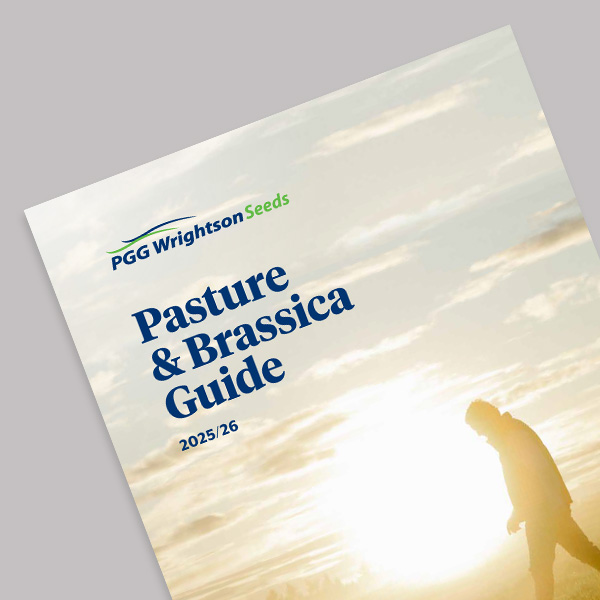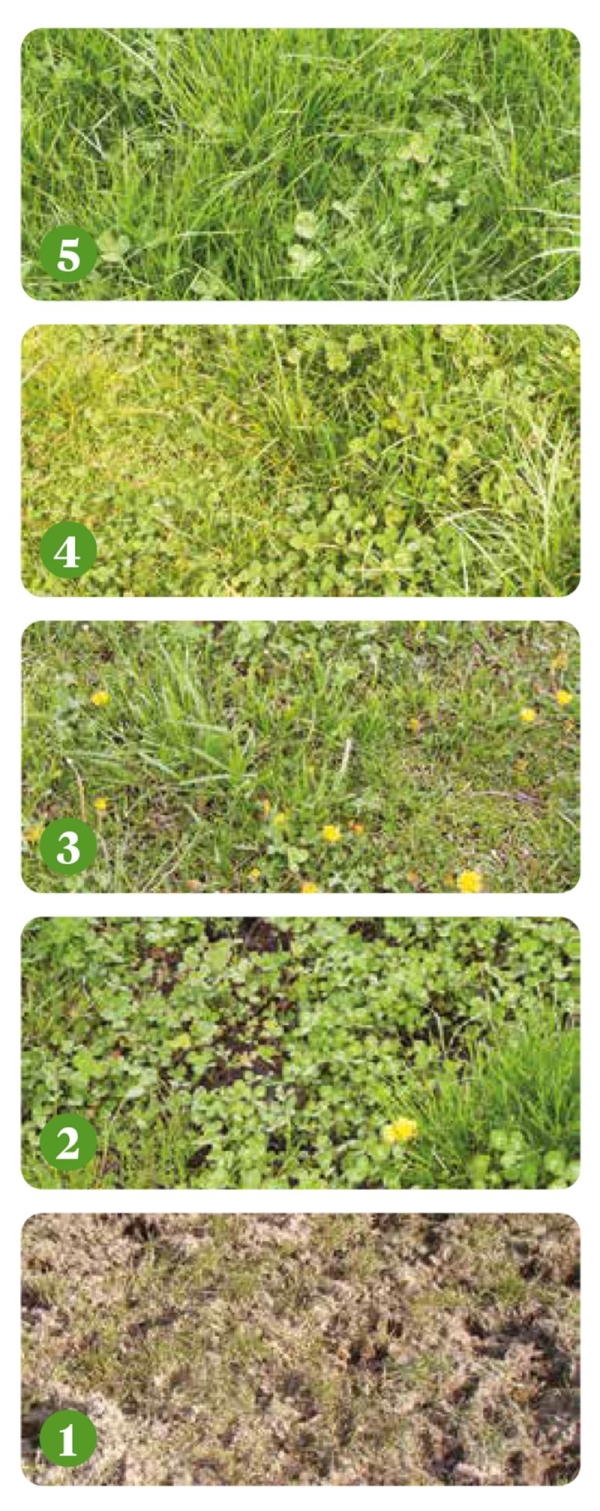Pasture condition scoring
Condition scoring every paddock on the farm will help determine under -performing paddocks and identify those that may need to be renewed.
USE THIS PASTURE CONDITION SCORE TOOL TO HELP WITH DECISIONS*
Run out paddocks scoring 1-3 will be those to target for undersowing or pasture renovation.
5. Paddock covered in dense swards of desired grasses and clovers
No action required. Would be happy if the whole farm was in this state.
4. Patches of low-level damage, some weeds, less vigorous grasses
3. Large sections of low level damage, weeds, less vigorous grasses
2. Severe damage in parts, many weeds, patches of bare ground
- Undersow with perennial ryegrass in autumn (e.g. Platform or Excess at 12+ kg/ha), or:
- Undersow with Italian ryegrass (e.g. Lush AR37 at 15+ kg/ha) in autumn and plan to renew in following 12-18 months
1. Severe damage across entire paddock
Once you’ve pasture condition scored the farm, you’ll be able to prioritise which paddocks require undersowing.
Tips and tricks
Timing
Aim to undersow paddocks before bare areas are filled in with unproductive grass and broadleaf weeds. Ideally, paddocks should be hard grazed to minimise competition during the establishment phase.
Early grazing management
Graze undersown paddocks when seedlings pass the ‘pull test’. Avoid accumulating large covers as this will shade out recently sown seedlings and reduce tillering.
Endophtye
Using a novel endophyte is important when undersowing run out pastures, particularly in pasture with an existing pest issue such as Argentine Stem Weevil or Black Beetle.
Seed treatment
All seed that is undersown should be treated with Superstrike® to protect against pasture pests. This is cheap insurance and a small cost when considering the cost of re-drilling the paddock 6-8 weeks later.
Note - Pastures undersown with Superstrike® seed have a grazing withholding period of 21 days.


